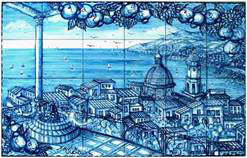Speaker
Mr
Tadeusz Strózik
(Institute of Applied Radiation Chemistry, Lodz University of Technology – The Faculty of Chemistry)
Description
Porphyrins and related tetrapyrrolic compounds have attracted interest of scientists from many areas due to their immense biological importance and their fascinating physical, chemical, and spectroscopic properties. Synthetic tetrapyrrole pigments, which selectively localize in tumor cells, can be applied in photodynamic therapy (PDT). Under certain conditions, porphyrins can also act as radiosensitizers. Thus, a reasonable combination of radiotherapy and PDT might be really promising anticancer treatment.[1]
The subject of this study is reactivity of two cationic porphyrins: meso-tetrakis (4-N-methylpyridyl) porphine (TMPyP) and meso-tetrakis [4 - (trimethylammoniumyl) phenyl] porphine (TAPP) in the buffer solution of DNA.
From pulse radiolysis studies we concluded that the free base porphyrins (P) are reduced to their radicals (P*-), which subsequently disproportionate to yield the phlorin and chlorin. These two main reduction products can be distinguished by their reactivity to oxygen[2] (especially in the presence of DNA).
It was observed that charges on the side chains of porphyrin molecules affect site of porphyrin localization within the DNA helix. Moreover, DNA shows a strong protective effect as it partially isolates porphyrin molecules from molecular oxygen and from the hydrated electron.
This work has been founded from the Polish budget for science (research project
NN 204 537339, 2010 - 2013).
References:
1. Luksiene, Z., Kalvelyte , A., Supino, R., 1999. On the combination of photodynamic therapy with ionizing radiation. J. Photochem. Photobiol. B: Biol. 52, 35–42.
2. Baral, S., Neta, P., Hambright, P., 1984. Spectrophotometric and kinetic studies of the radiolytic reduction of several pyridylporphyrins and their metal complexes. Radiat. Phys. Chem. 24, 245-255.
Author
Mr
Tadeusz Strózik
(Institute of Applied Radiation Chemistry, Lodz University of Technology – The Faculty of Chemistry)
Co-authors
Mrs
Maria Hilczer
(Institute of Applied Radiation Chemistry, Lodz University of Technology – The Faculty of Chemistry)
Mr
Marian Wolszczak
(Institute of Applied Radiation Chemistry, Lodz University of Technology – The Faculty of Chemistry)

